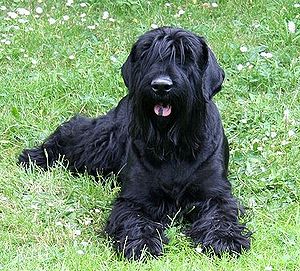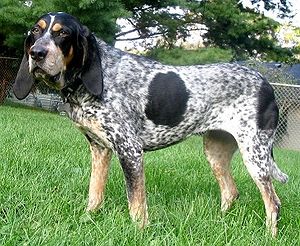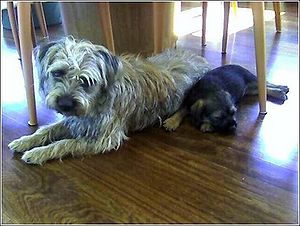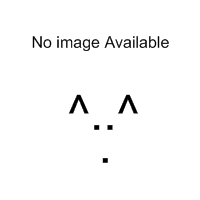 |
| Vital Statistics: |
| Place of Origin: Germany |
| Group: Working, Guard dog |
| Height: males 26-28 in., females 23-26 in. |
| Weight: males 60-80 lbs., females 55-75 lbs. |
| Life span: 12-15 yrs |
| Trainability: high |
| Good with children: with early socialization, best with older children |
| Good with other pets: with early socialization, may show dominance |
What is the origin of the Giant Schnauzer?
Cattlemen in Bavaria, Germany wanted a large Schnauzer, a breed they admired, to drive cattle. After several crosses, a weather resistant Schnauzer was created, capable of working cattle. In the 1700s the Giant Schnauzer also guarded beer halls and butcher shops.
What does the Giant Schnauzer look like?
The Giant Schnauzer is a larger version of the Standard and more powerful. Males are 26-28 inches tall; females are 23-26 inches tall. Weight is 55-80 lbs. The head is rectangular with a powerful muzzle showing whiskers and mustache. Ears are sometimes cropped, when natural are v-shaped. Dark eyes are oval and deep-set. The back is short and straight. Feet are cat-like. The docked tail is carried high. The coat is hard, wiry, short to medium length with a woolly undercoat. Colors are solid black or pepper and salt. The coat needs combing once or twice a week with shaping and stripping 2-4 times a year.
What is the temperament of the Giant Schnauzer?
The Giant Schnauzer is a highly intelligent dog. Early firm, positive obedience training and socialization are necessary to help avoid problems like dominance. They do better with older children. They need to be stimulated mentally and physically. These Giants can be aggressive with other dogs and reserved with strangers. They are very protective of their family. The Giant Schnauzer needs long vigorous walks daily. They are not suited for apartment living.
What is the Giant Schnauzer used for?
In Germany they were used for herding cattle and also trained for police and military work. Today they are natural watchdogs and bodyguards and compete in obedience and agility trials. Giant Schnauzers are loving, very loyal companions with their family.
Possible Health Issues
Osteochondrosis dissecans, hypothyroidism, hip dysplasia, bloat/gastric torsion.
- Akbash Dog
- Alaskan Malamute
- Anatolian Shepherd Dog
- Appenzell Mountain Dog
- Belgian Malinois
- Boxer
- Burnese Mountain Dog
- Canaan Dog
- Chinook
- Deutscher (German) Pinscher
- Doberman Pinscher
- Dogue de Bordeaux
- Estrela Mountain Dog
- German Spitz (Giant, Standard, Toy)
- Great Dane
- Greater Swiss Mountain Dog
- Greenland
- Irish Red & White Setter
- Kai Ken
- Korean Jindo Dog
- Kuvasz
- Laika
- Leonberger
- Newfoundland
- Norwegian Elkhound
- Rat Terrier
- Rottweiler
- Saint Bernard
- Samoyed
- Siberian Husky
- Standard Schnauzer
- Tibetan Mastiff
- Akbash Dog
- Anatolian Shepherd Dog
- Black Russian Terrier
- Boerboel
- Bullmastiff
- Burnese Mountain Dog
- Ca de Bou
- Cane Corso
- Chinese Shar-Pei
- Chow Chow
- Estrela Mountain Dog
- Fila Brasileiro
- Great Pyrenees
- Hokkaido Dog
- Kai Ken Dog
- Kangal Dog
- Karelian Bear Dog
- Kerry Blue Terrier
- Komondor
- Kuvasz
- Mastiff
- Neapolitan Mastiff
- Norwegian Elkhound
- Presa Canario
- Pyrenean Mastiff
- Rafeiro do Alentejo
- Rhodesian Ridgeback
- Rottweiler
- Sanshu
- Shikoku Inu
- Tibetan Mastiff
- Tosa Ken
- Affenpinscher
- Boxer
- Dachshund
- Deutscher (German) Pinscher
- Doberman Pinscher
- Eurasier
- German Shepherd
- German Shorthaired Pointer
- German Spitz (Giant, Standard, Toy)
- Great Dane
- Hovawart
- Leonberger
- Miniature Pinscher
- Miniature Schnauzer
- Pomeranian
- Poodle
- Pudelpointer
- Rottweiler
- Standard Schnauzer
- Weimaraner



